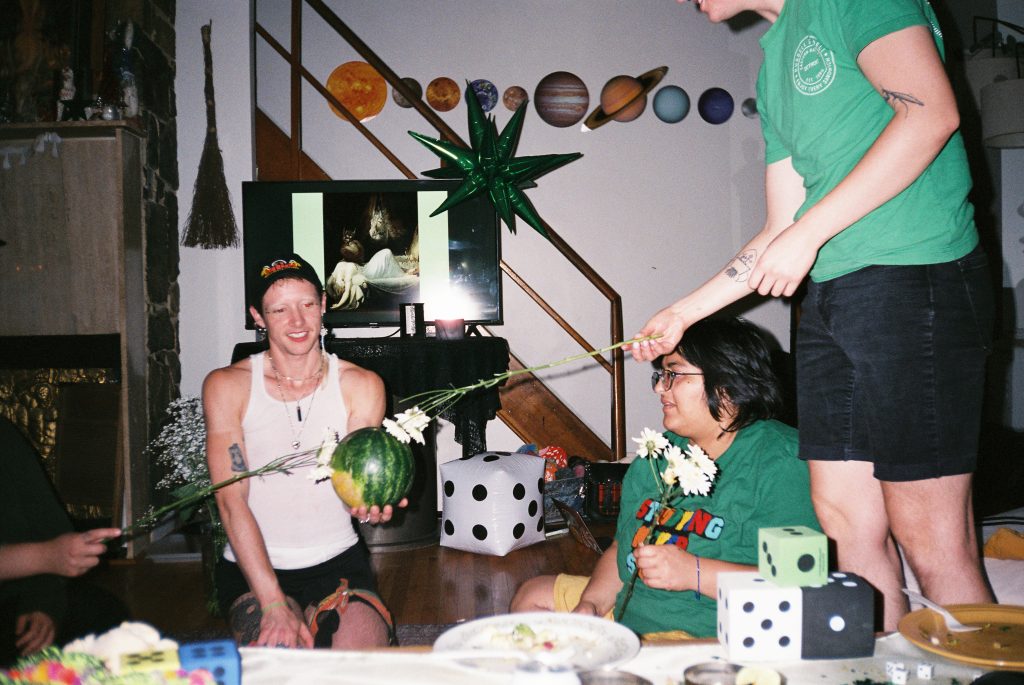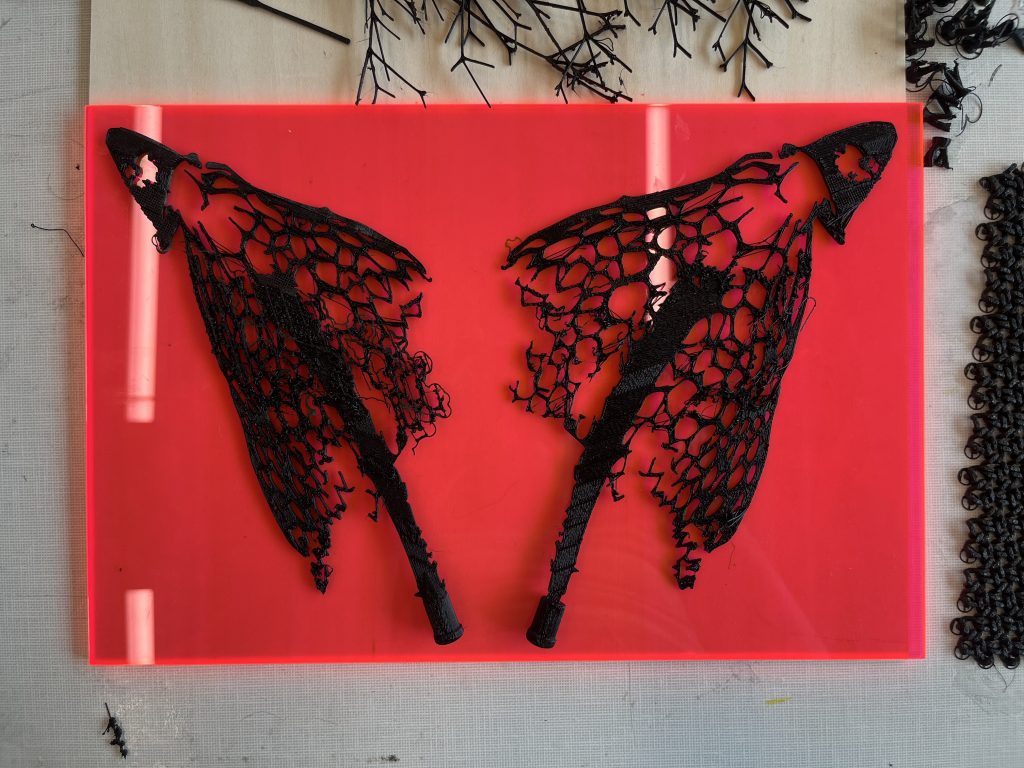The first time I heard the theremin I wept — not solely because I thought the sound was beautiful but because it felt like the sound was coming from inside my body. Turns out I was right. We are partly capacitors. We are conductors, made mostly of water: we flow and through us things flow, we touch water and all the water in us touches it back, we’re always already entangled with potential. We may not see it, but we can feel it.
With this as my jumping off point, I used my time at the Makerspace to delve into the material implications and manifestations of these perlocutions, namely through the use of a stimulation device called the Neon Wand that produces a low-frequency electrical current. Using an attachment called the power tripper – which allows the wearer to become the conductor of said current – I explored the different intensities and corresponding structures of various materials and their capability to conduct. I.e. anything that has water content is a good conductor, which is rather counterintuitive (and potentially dangerous!) when it comes to working with electricity.
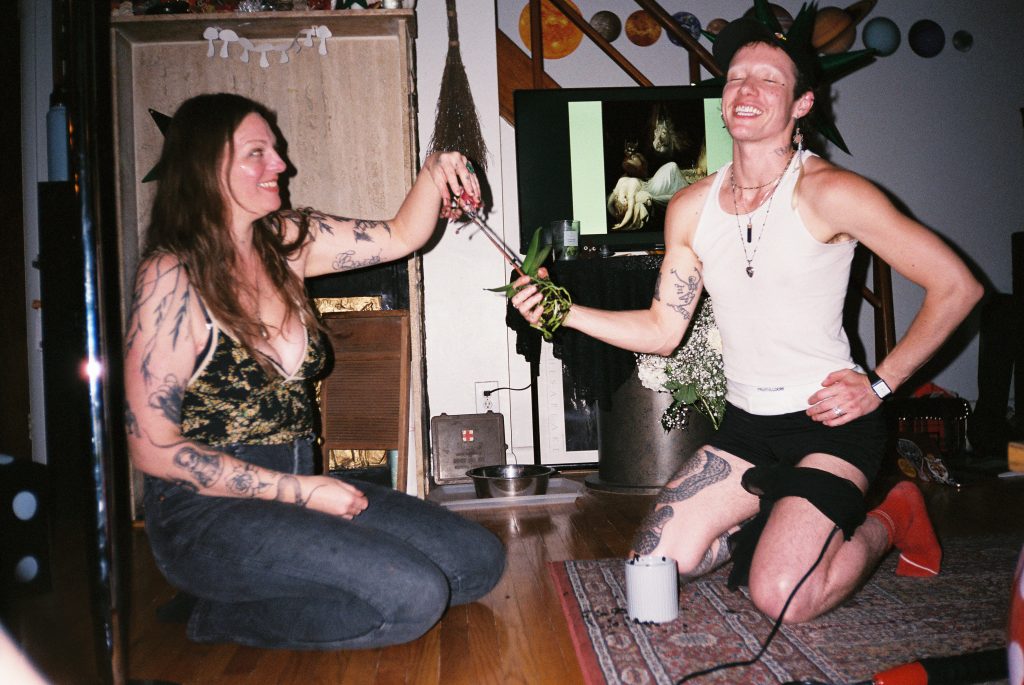
With the help of Logan Crompton, (and many trial-and-error 3d-printed tests), I was able to create my own Neon Wand attachment probe base, that could then be used for any and all of the various designs I created and refined through sensorial experimentation. Each attachment printed presented an opportunity to explore the mechanics of electrical current and its exchanges, on both a molecular and somatic level. By using an electrically conductive TPU filament, I was able to make custom interactive educational attachments that follow the same principles as materials with high water content, then aesthetically and sensorially sprinkle them with my own pleasure-centric principles.
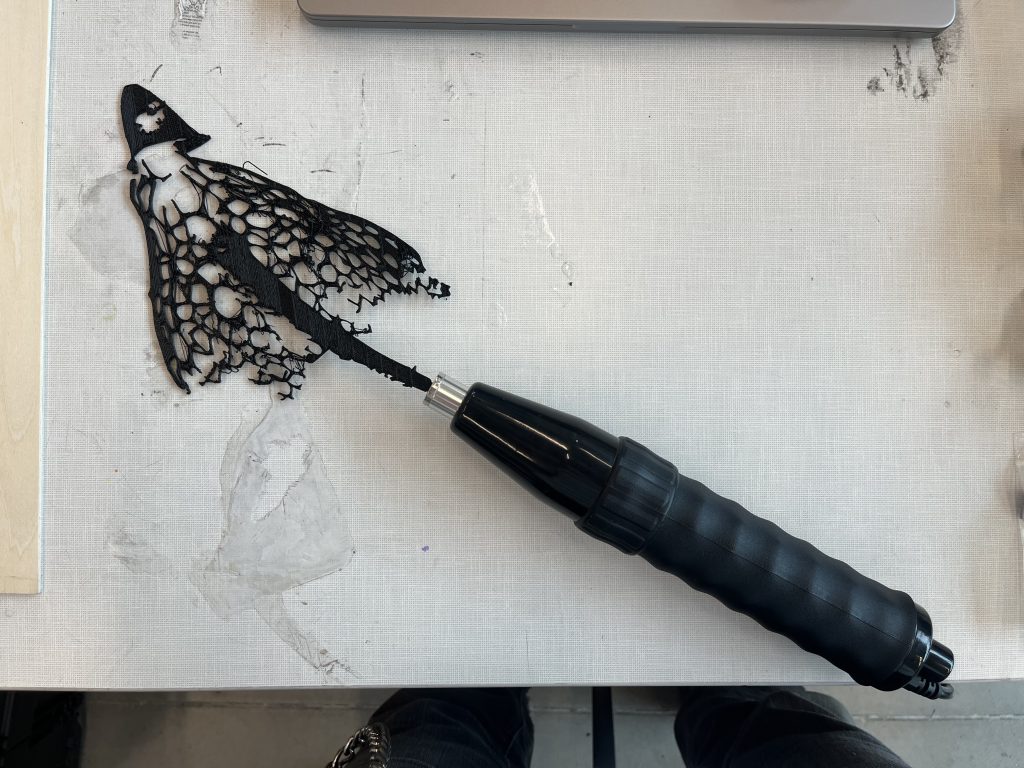
My obsession with the theremin, with electricity, with how we move matter both seen and unseen, and by how that matter and those forces move us right back has been a longtime research endeavor in my artistic practice and elsewhere. Beyond the studio, it lives out in the world, taking experiment in the form of embodiment and somatic practices of shared sensation. What do I mean when I say this? What does this look like? I mean that there is something I am trying to show you: here the showing is integral to or even precedes the telling — it pokes scientific knowledge in the side with an electrified mushroom and laughs, and it invites you to do the same.
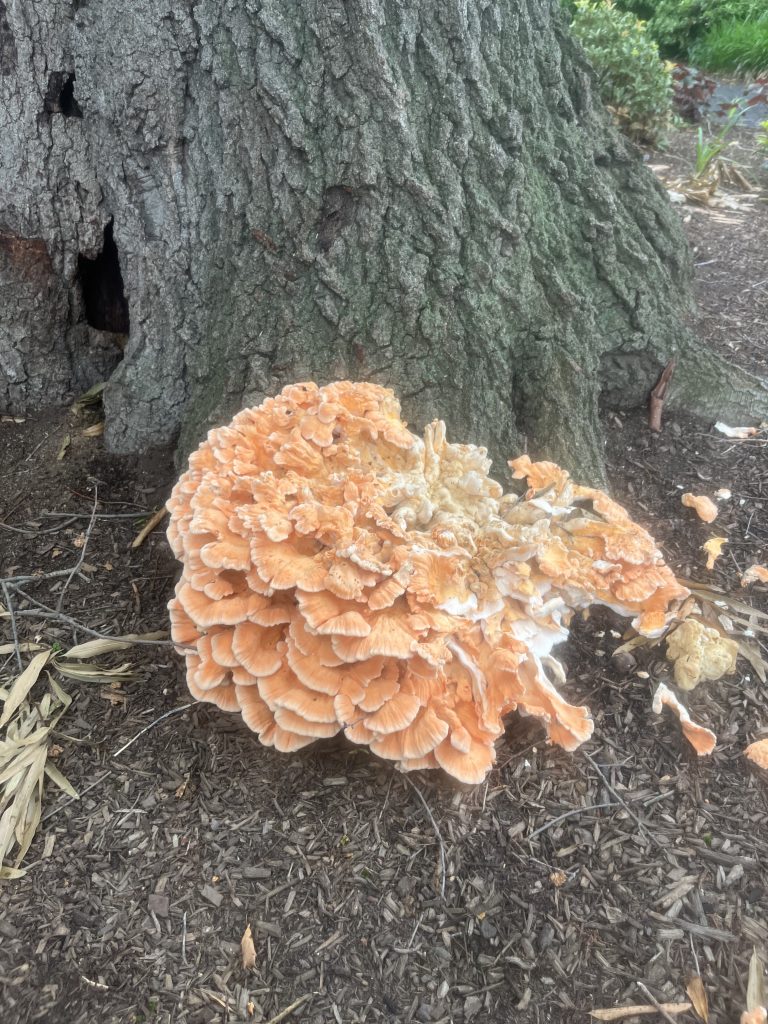
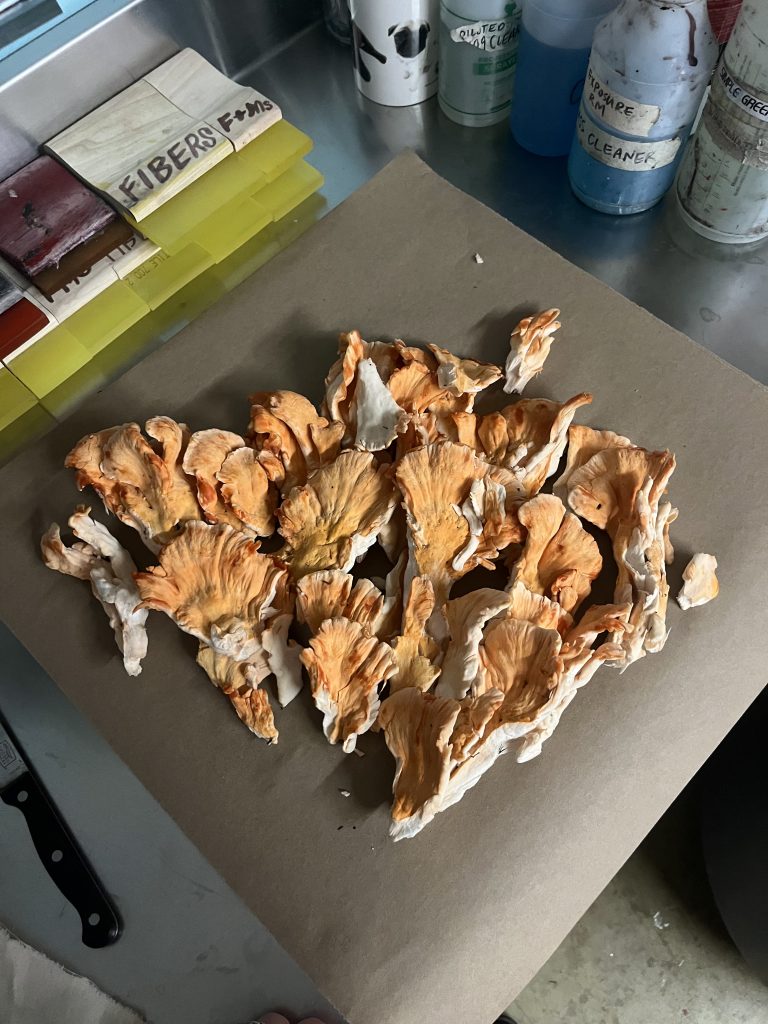
There is something to be said for this experiential curiosity, how it loosens the reigns of expertise and classification by means of inviting in every “what if?” where trying is the whole point. What if we held a watermelon together? What if we rehydrated lavender? Could we make a new scented electric sensation? Pansies or prawns of chicken of the woods as personally preferred conductor?
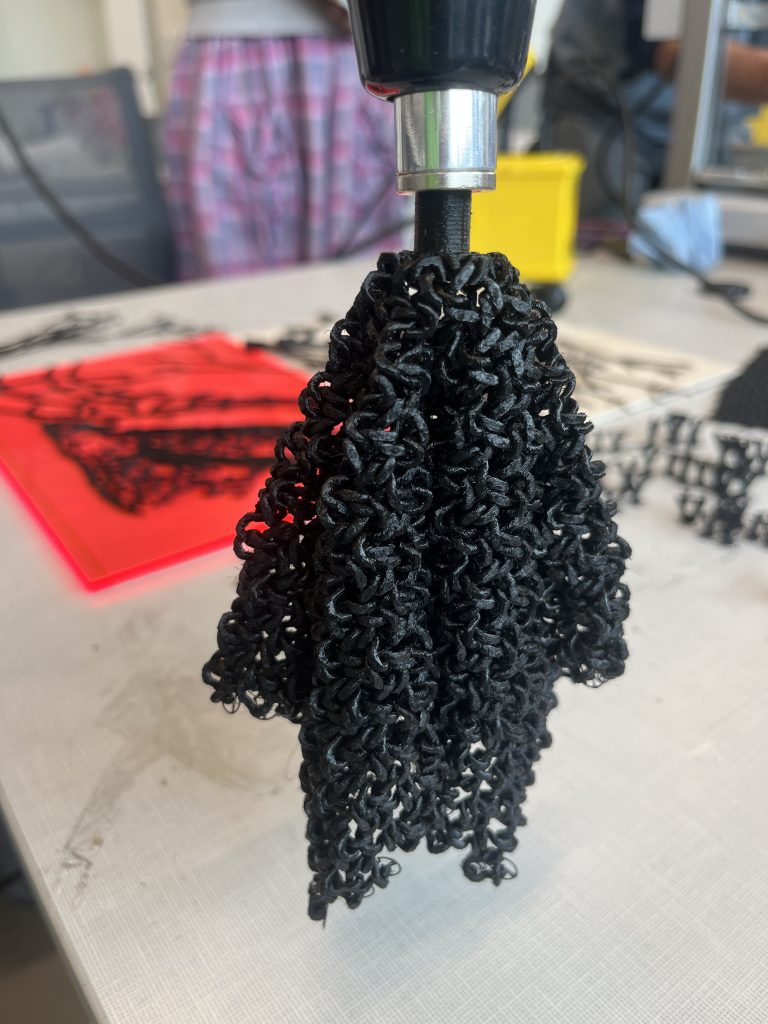


I am grateful for the many people who came into the Makerspace during my time there and answered the question of “do you want to be shocked?” with an emphatic “YES!” This project allows others to understand electrical current, electron discharge, and our human capacity for conductivity through interactive sensorial inquiry. As the steward of the plants in the natural dye garden at Tyler, it was also a wonderful opportunity to learn more about the various flora and fungi growing elsewhere on Temple’s campus. Various species employed as conductors included: chicken of the woods, lavender, yellow cosmos, service berries, pansies, and St. John’s wort, amongst others.
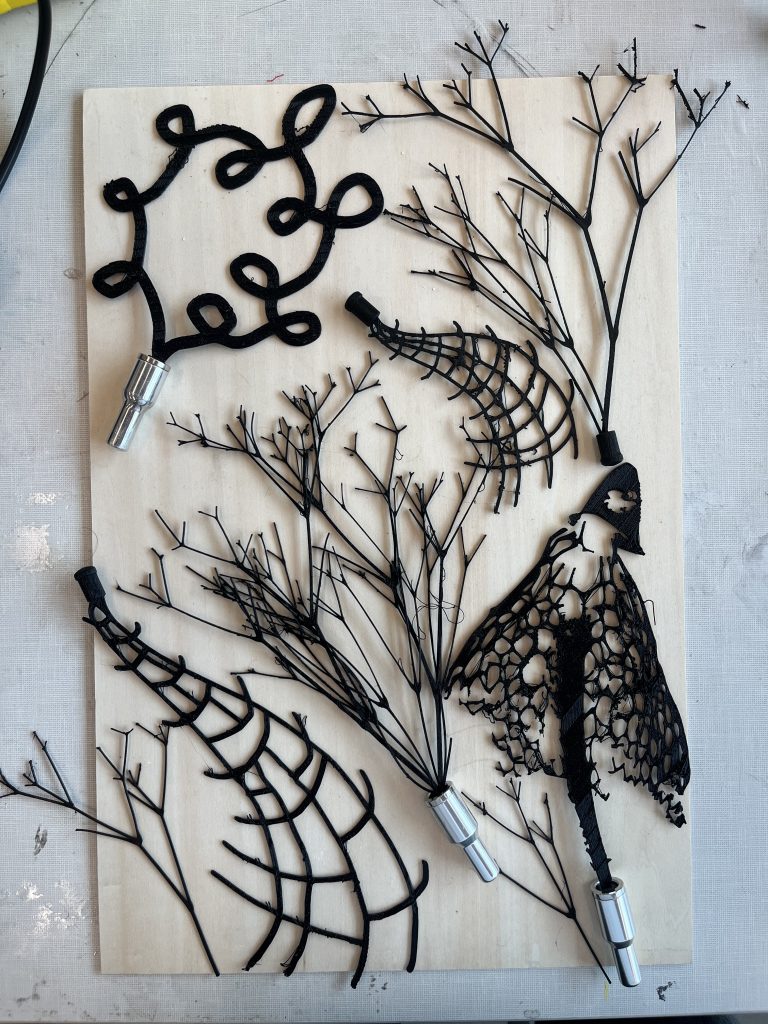
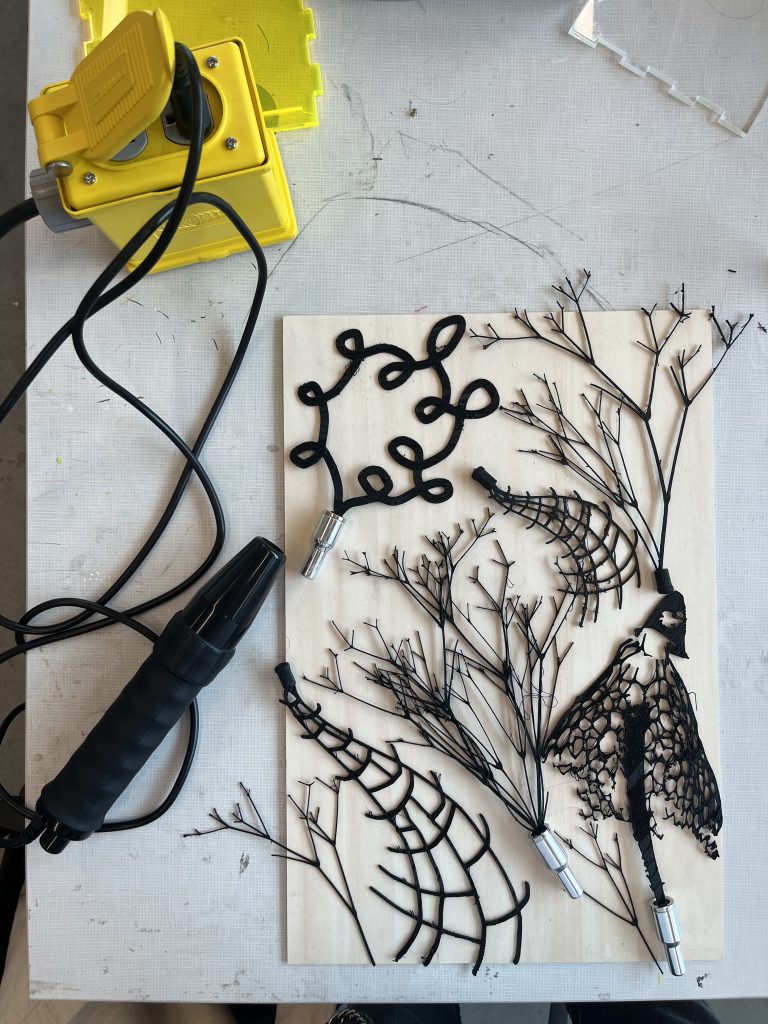
Deeply embedded in concerns surrounding scientific knowledge (accumulation), pedagogy, and pleasure, this project builds upon my larger artistic practice — specifically my concept of “pleasure physics” — in order to destabilize boundaries of belonging and access as it pertains to scientific (institutional) knowledge. The title “Us Conductors (We Three)” is the third installment of an ongoing research project of the same name presented as part of Science Club. Borrowing from a song by The Ink Spots of the same name, “We Three” considers the potentiality in the interconnected entangling that is the trio: “my echo, my shadow, and me.” What (un/re)learning arises when we are invited to dance with our echos (a reverberation beyond), our shadows (all that lingers behind), and ourselves (the amalgamation of these sensorial worlds)? Understanding these elements as ever-present, this project seeks to highlight the importance of the power and relatedness of the unseen — undoing the primacy of the visual as our preferred mode of understanding. It is a call to remember and an invitation to experience the ways in which the things we touch also touch us back — our capacity for electron exchange extends itself as a mirror of our capacity for actively engaging in new modes of pleasure and understanding.
-lydon frank lettuce
